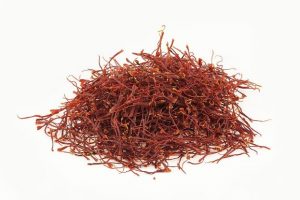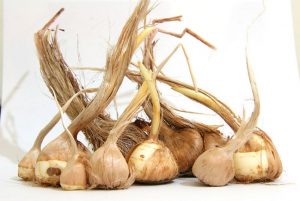 Saffron is a small, perennial plant with a height of 1 to 2 cm. From the middle of the onion or stem base, some leaves are thin and long. From the middle of the leaves, a flowering stem emerges that leads to one to three flowers. The flowers have 4 purple petals that may be muddy or purple in some varieties. The flowers have 2 flags and a pistil leading to the red stigma of orange. The part used in this plant is the cream and stigma end, which is known as saffron, and is fragrant and slightly bitter.
Saffron is a small, perennial plant with a height of 1 to 2 cm. From the middle of the onion or stem base, some leaves are thin and long. From the middle of the leaves, a flowering stem emerges that leads to one to three flowers. The flowers have 4 purple petals that may be muddy or purple in some varieties. The flowers have 2 flags and a pistil leading to the red stigma of orange. The part used in this plant is the cream and stigma end, which is known as saffron, and is fragrant and slightly bitter.
Saffron has many health benefits. Some of the most important properties of saffron and the benefits of saffron are: ability to improve breathing health, optimize digestive system, relieve pain, improve sleep patterns, reduce bleeding, improve heart health, increase blood circulation, prevent diabetes, strengthen bones and Improve immune function.
Medicinal properties of saffron
Saffron contains over 150 different compounds including carotenoids, safranal, crocin, antioxidants and other biochemicals. There are also minerals and vitamins in saffron that are essential for human health.

